This step by step diy woodworking project is about kids lemonade stand plans. The project features instructions for building a simple lemonade stand for your kids. Use 2x2s, 1x6s and 1x4s to build this rustic lemonade stand that is also great for backyard parties. The best part of the project is that you can get the job done by yourself with common tools and adjust the dimensions easily, while using the same techniques.
When buying the lumber, you should select the planks with great care, making sure they are straight and without any visible flaws (cracks, knots, twists, decay). Investing in cedar or other weather resistant lumber is a good idea, as it will pay off on the long run. Use a spirit level to plumb and align the components, before inserting the galvanized screws, otherwise the project won’t have a symmetrical look. If you have all the materials and tools required for the project, you could get the job done in about a day. See all my Premium Plans HERE.
Projects made from these plans
Kids Lemonade Stand Plans

Building a lemonade stand
Cut & Shopping Lists
- A – 4 pieces of 2×2 lumber – 29 1/2″ long, 4 pieces – 20 1/4″ long, 4 pieces – 33″ long FRAME
- B – 5 pieces of 1×6 lumber – 36″ long, 10 pieces – 24″ long SLATS
- C – 4 pieces 1×3 lumber – 30 1/2″ long TRIMS
- D – 7 pieces of 1×4 lumber – 40″ long TABLETOP
- E – 2 pieces of 1×4 lumber – 67″ long SUPPORTS
- F – 1 pieces of 1×8 lumber – 40″ long BANNER
- 4 pieces of 2×2 lumber – 8 ft
- 7 pieces of 1×6 lumber – 8 ft
- 2 pieces of 1×3 lumber – 8 ft
- 1 piece of 1×8 lumber – 6 ft
- 1 1/4″ screws
- 1 5/8″ screws
- 2 1/2″ screws
- filler, stain
- glue
Tools
![]() Hammer, Tape measure, Framing square, Level
Hammer, Tape measure, Framing square, Level
![]() Miter saw, Drill machinery, Screwdriver, Sander
Miter saw, Drill machinery, Screwdriver, Sander
Time
![]() One day
One day
Building a wood lemonade stand
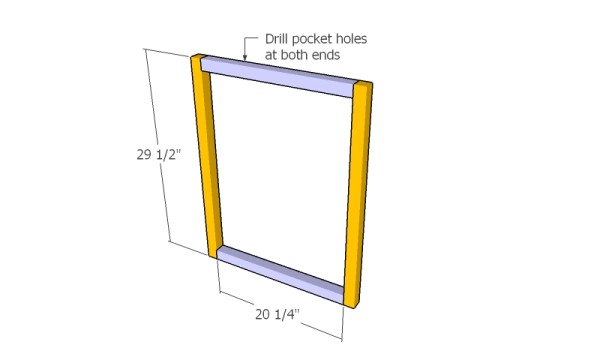
Building the side frames
The first step of the project is to build the sides for the lemonade stand frame. Cut the components at the right dimensions out of 2×2 lumber. Drill pocket holes at both ends of the horizontal components and secure them to the vertical components using 2 1/2″ screws. Make sure the corners are square and align the edges with attention.
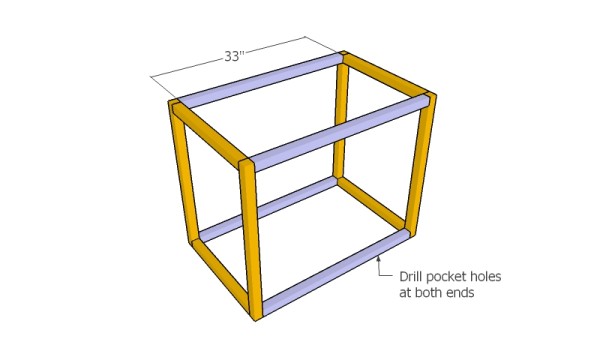
Assembling the frame of the lemonade stand
Drill pocket holes at both ends of the front and back components and secure them to the sides using 2 1/2″ screws. Make sure the corners are square.

Fitting the front slats
After building the structure for the lemonade stand, you need to attach the 1×6 slats to the front of the box frame. Use brad nails and glue to secure the slats to the structure. Make sure you align the slats at both ends and place a 1/2″ plywood piece between the components to create equal gaps.
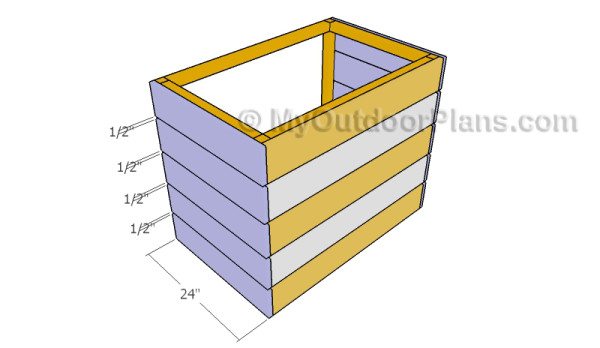
Fitting the side slats
Next, attach the 1×6 slats to the sides of the lemonade stand. Align the edges and secure the slats into place with brad nails.
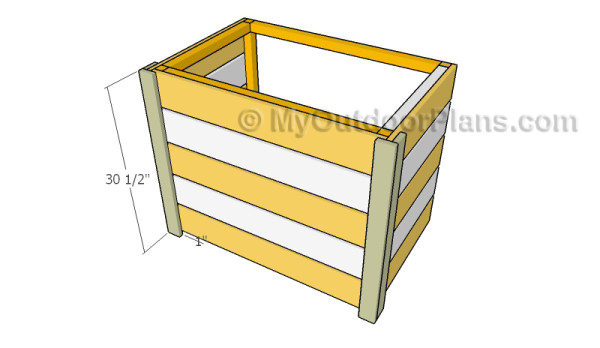
Attaching the corner trims
Continue the project by attaching the corners trims to the front of the lemonade stand. Cut the components from 1×3 lumber and secure them to the lemonade stand using 1 1/4″ brad nails. Leave no gaps between the components and make sure everything is aligned before inserting the nails. As you can see, there is a 1″ clearance space between the ground and the bottom of the lemonade stand.
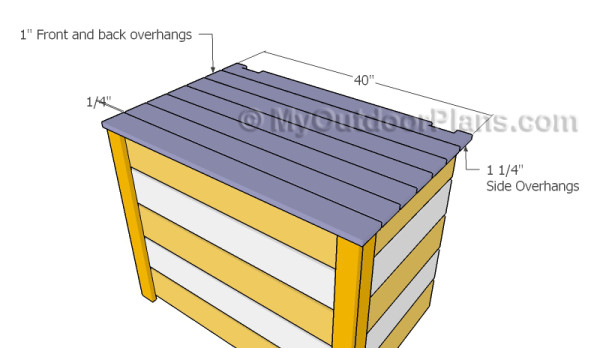
Attaching the top slats
Build the tabletop for the lemonade stand from 1×4 slats. Fit the slats to the top of the box, as shown in the diagram. Use 1 1/4″ brad nails to secure the slats into place. Place a piece of 1/4″ plywood between the slats to create equal gaps. Align the edges and smooth the surface with sandpaper.

Building the top back slat
Make the notches to the slat that is placed at the back of the lemonade stand. Use a chisel to clean the recess.
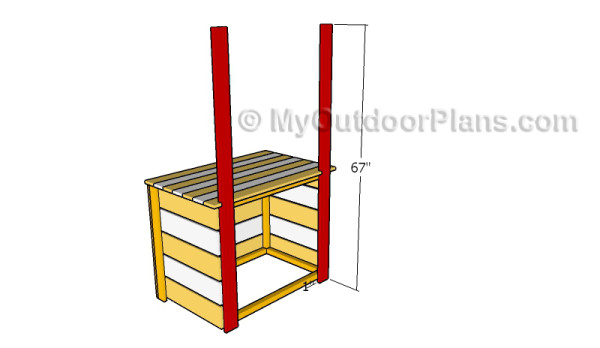
Fitting the back supports
Attach the 1×4 supports to the back of the lemonade stand. Make sure you leave a 1″ gaps between the ground and the bottom of the stand. Plumb the supports with a spirit level and secure them to the structure with 1 1/4″ screws.

Fitting the baner
Build the banner from 1×8 lumber. Cut the slat at the right dimension and smooth the edges with fine-grit sandpaper. Clamp the slat to the top of the supports, as shown in the diagram. Drill pilot holes through the slat and insert 1 1/4″ screws into the supports. Leave no gaps between the components and make sure the corners are square.
Fill the holes and dents with wood putty and let it dry out for several hours. Use 120-200 grit sandpaper to smooth the surface. The best part of the project is that the feeding station has two bowls and a large storage area for food and pet toys.
Top Tip: If you want to enhance the look of the project and to protect the feeding station, we recommend you to cover the components with paint or stain.
This woodworking project was about dog feeding station plans. If you want to see more outdoor plans, we recommend you to check out the rest of our step by step projects. LIKE us on Facebook and Google + to be the first that gets out latest projects and to hep us keep adding free woodworking plans for you.




